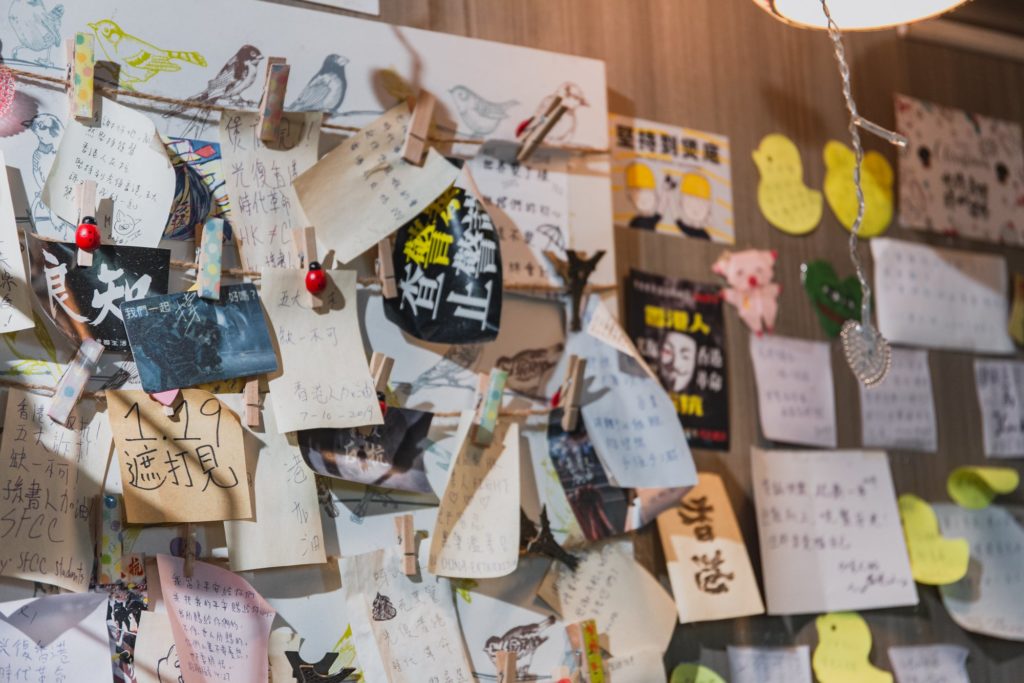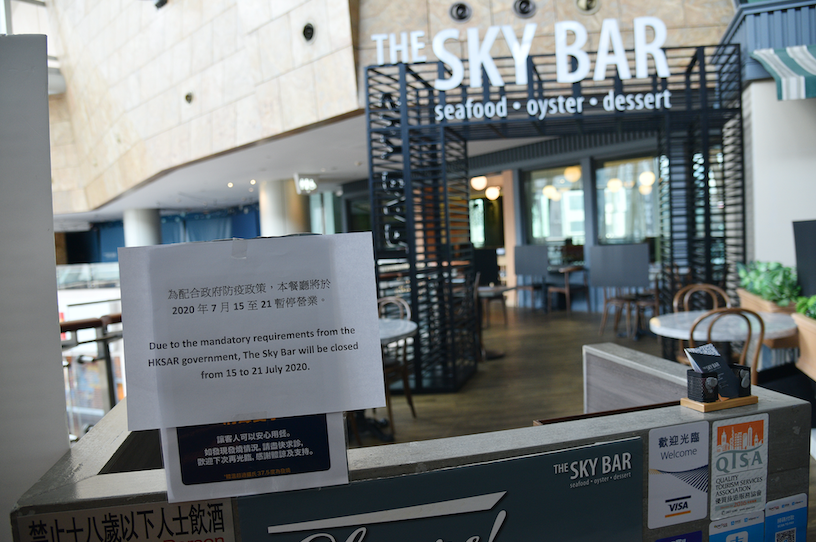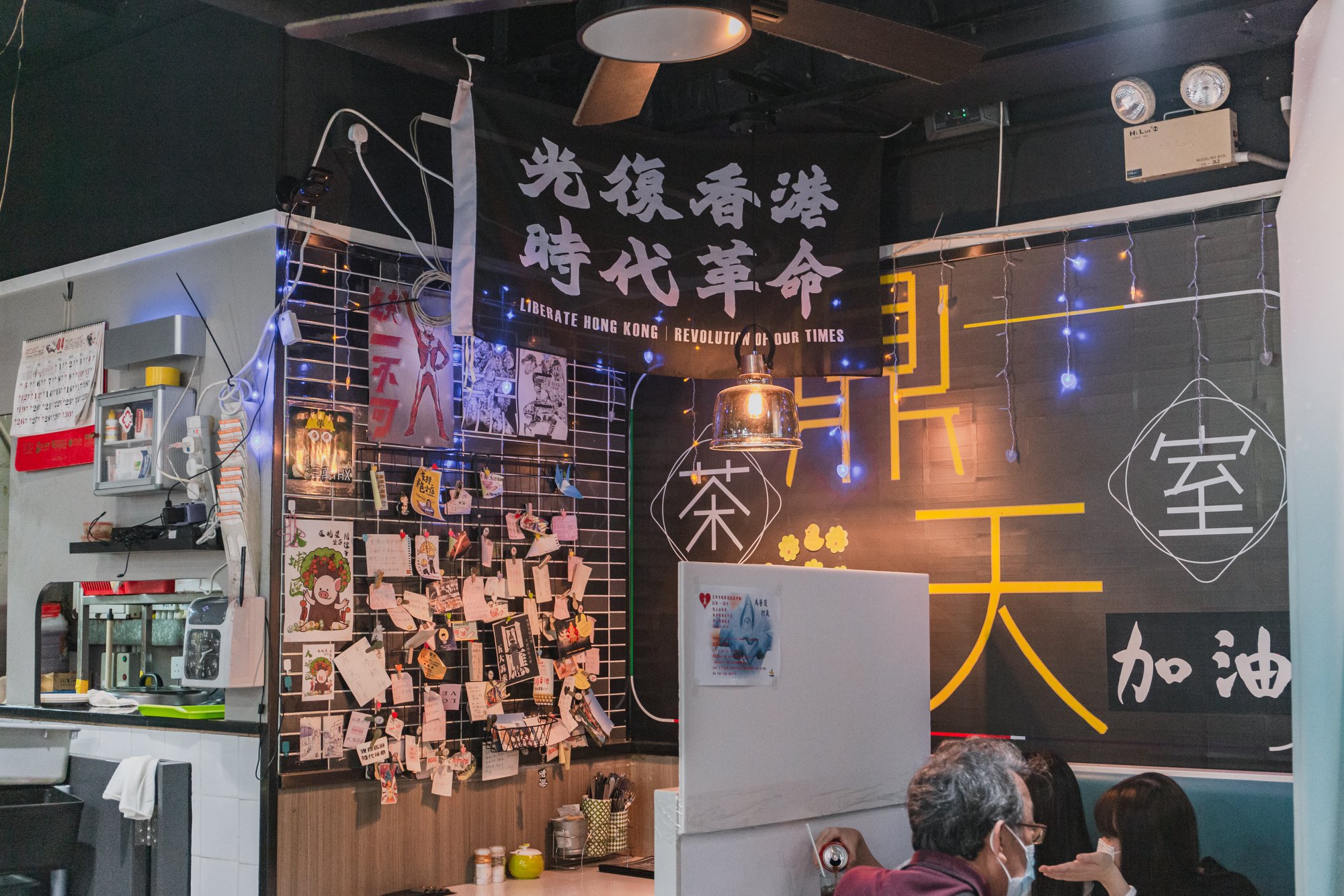Before the recent spate of coronavirus cases, Hong Kong seemed to be out of the woods. In late-April, May and June, the city was recording weeks on end without a single local infection, and streets that had emptied out since the start of the year were once again busy.
Now, the worsening epidemic is driving people right back into their homes, away from the shops and restaurants that were just starting to see business pick up.
But this third COVID-19 wave is unlike the earlier outbreaks. For one, it’s much more severe—and so are the government’s public health policies in response. Earlier this month, as part of new policies aimed at curbing the virus, restaurants were barred from offering dine-in services past 6pm.
The renewed outbreak is also ravaging a Hong Kong that, under Beijing’s national security law, isn’t quite the city it was months before.
The hardest hit
While businesses large and small across the territory are being struck hard by the virus’ resurgence, it is the city’s “yellow” shops—companies openly supportive of the pro-democracy movement—that are perhaps the most affected.

As mostly independent-owned shops and restaurants, “yellow” don’t have the powerful financial backing of their “blue” (pro-government) competitors.
Fearful that the law could be arbitrarily used to target them, many have deleted social media posts and torn down protest-related posters. These displays of support had been instrumental in spreading word-of-mouth about their businesses, which helped them bounce back after the virus’ first and second waves.
“We know that these are extremely dangerous times. After discussing, we decided to remove our Lennon Wall, posters and pictures,” Ben, the owner of T Tea House in Tai Po, told Coconuts HK. “It’s safety first.”
Even access to information about pro-protest restaurants has been self-censored. WoLeiEat, a mobile app that drew up a directory of yellow shops, was removed from app stores the day after the law came into effect. WhatsGap, which served a similar function, no longer contains information about yellow shops—it now helps users locates claw machines around the city, which is what the app was originally designed for before turning political.
NeoGuideHK, a website that operates a map of the city’s “yellow” restaurants, is still up and running. But they reached out to restaurants asking if they would like to be removed, and have also slowed down their social media posts.
A netizen running NeoGuideHK who asked to be identified as “Plastic Flower” told Coconuts HK: “The no dine-in rule is a threat to all restaurants in Hong Kong.” Pro-protest restaurants especially, he added, may see their days numbered.
‘Just hoping we don’t have to shut down’
In the past two weeks alone, Hong Kong confirmed 1,626 cases—that’s more than 40% of the 3,755 virus infections the city has recorded since January, when the local epidemic began.

According to statistics from local dining guide OpenRice, over 500 restaurants shut in June and July. With no signs of the outbreak easing anytime soon, the city’s battered food and beverage industry is expected to see a wave of closures that could implicate thousands of businesses.
About half a dozen “yellow” restaurants told Coconuts HK that the worst case scenario—going bust—looks less like a hypothetical with every passing day. In the meantime, they’re doing what they can to stay afloat.
Tomato C Hing, a local-style cafe with branches in Sham Shui Po and Yuen Long, had already seen their business fluctuate for months. To make up for the drop in customers due to the dine-in ban, their Yuen Long branch is opening an hour earlier 11:30am instead of 10:30am.
“Most of our revenue comes from people who dine-in for lunch and dinner,” the owner of Tomato C Hing, who asked to remain anonymous, said. “The impact of the no-dining-in restriction is massive.”
But not all restaurants can just pivot to offering takeout. JK Brother’s is an all-you-can-eat Japanese restaurant serving hotpot and barbecue in Tsim Sha Tsui. With takeaway not an option, JK Brother’s is now a de facto supermarket selling frozen meat, seafood, vegetables—basically whatever’s in their kitchen—so their food supply doesn’t go to waste.
The restaurant also posts what’s for sale on Facebook—letting the stuff go at wholesale prices—and does delivery. “疫情再告急 只求唔好執,” it writes, a phrase that translates roughly as “[This is an] epidemic emergency, [we’re] just hoping we don’t have to shut down.”
The manager, Mrs. Chow, told Coconuts HK that their revenue had already been slashed by 70% in the first six months of this year. “At this moment we can still afford the rent,” she said. “But if the authorities enforce tighter restrictions in the future, then we can do nothing about it.”
Some have already buckled under the pressure. Even extending the availability of lunch sets to 5pm and offering steep discounts couldn’t save Aobana, a local-style fusion cafe in Prince Edward.
On Facebook, the cafe wrote that they will temporarily close from Monday onwards until the virus restrictions are lifted. Aobana has only been open for a little over a year.
“Everyone is suffering under the epidemic. Everyday, when we see customers travel a long way to our restaurant, we get teary-eyed. But… our revenue has fallen by 80%,” the post read.
“We’re losing a lot of money. We went back and forth on this, but the reality has forced us to say goodbye for now.”
‘Yellow takeaway circles’
Thankfully, the city’s fiercely competitive restaurant industry is no stranger to hardship. With crisis comes opportunity—and a new way to keep the spirit of the protest movement going as street demonstrations halt.
Earlier this year, netizens began organizing “yellow” delivery platforms as a means of supporting pro-protest restaurants and to meet heightened demand from people spending more time at home.
With virus cases rising sharply, interest in their services has renewed. Most of them are small-scale, side-hustle operations that work with a few restaurants within a district.
According to a thread on popular forum LIHKG, there are close to 20 “yellow takeaway circles” covering western Central, Tsim Sha Tsui, Wong Tai Sin, Tai Po, and Sha Tin, among others.
The platforms take orders via messaging apps like Telegram or WhatsApp, and charge a delivery fee of around HK$20 (US$2.50) to HK$40 (US$5).
One of them, Tai Po Takeaway often promotes their partner restaurants on Facebook. They also take special requests, like delivering cigarettes along with the food and accepting an order at 2am.
Mr Mucha, who said he is one of the “administrators” of Takeout Sha Tin, told Coconuts HK that they have been receiving more orders since the no dine-in regulation was enforced. (He asked to stay anonymous.)
“Sometimes customers may need to wait a little longer [to receive their food],” he said, explaining that they have a modest team of about a dozen people handling the orders, liaising with restaurants and doing the deliveries.
He said the renewed outbreak has been especially hard on “yellow” restaurants, who have to deal with greedy landlords unwilling to cut rent. Authorities are also yet to announce any subsidies for the industry since the third wave began.
Echoing a common sentiment among many pro-protest businesses, he said: “The government is incompetent. We have to save ourselves.”
Feature photo shows the interior of T Tea House, a “yellow” restaurant in Tai Po, before pro-protest paraphernalia was removed. Credit: Facebook/Lady Liberty HK


